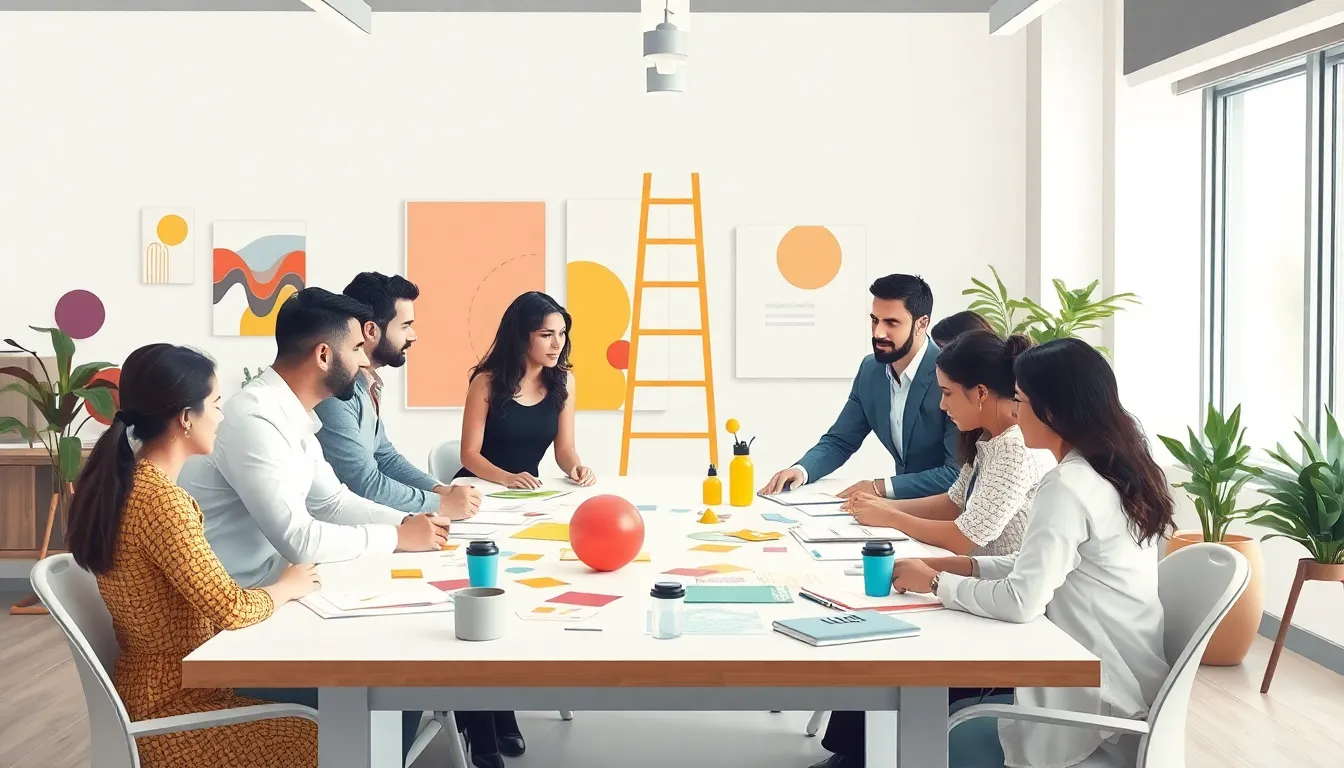In a world where ideas often get tangled in a web of monotony, creative thinking images serve as the ultimate escape hatch. They’re not just pretty pictures; they’re the spark plugs for innovation, igniting the imagination and transforming the mundane into the extraordinary. Imagine flipping through a gallery of visual inspiration that makes your brain do a happy dance—who wouldn’t want that?
Table of Contents
ToggleThe Importance of Creative Thinking Images
Creative thinking images serve as powerful tools that stimulate the mind and encourage exploration. These visuals not only inspire but also foster a deeper emotional connection to the creative process.
Enhancing Imagination
Visual stimuli profoundly impact creative thought. Creative thinking images expand the boundaries of imagination by presenting situations and ideas that may not be immediately obvious. They broaden perspectives, prompting individuals to explore diverse concepts. Engaging with different styles, colors, and forms encourages unique interpretations. Observing imaginative imagery can inspire individuals to visualize their own projects, leading to richer brainstorming sessions. Each image acts as a prompt that frees the mind from conventional constraints, allowing for unexpected connections.
Fostering Innovation
Images capable of sparking creativity also lay the groundwork for innovation. They present new ideas that challenge traditional approaches and motivate innovative solutions. Through visual exploration, teams can develop fresh strategies and tactics. Constructive discussions arise when individuals analyze images together, generating multiple viewpoints. Diverse interpretations enhance collaboration, fueling the innovation process. Visually engaging content can lead to breakthroughs that advance projects or products. By integrating creative imagery into brainstorming, individuals can transform initial concepts into groundbreaking innovations.
Types of Creative Thinking Images

Creative thinking images can manifest in various forms, each serving a unique purpose in inspiring innovation and imaginative ideas. Below are two prominent types.
Visual Metaphors
Visual metaphors encapsulate complex ideas into simple, relatable images. For instance, a ladder might symbolize growth and progression. These metaphors evoke associations and provoke thought by linking familiar concepts with new insights. Artists and designers often use visual metaphors to express abstract themes, making them accessible to broader audiences. Viewers interpret these images through their personal experiences, fostering a deeper emotional connection to the ideas presented. By engaging with visual metaphors, individuals can shift perspectives and enhance their creative problem-solving skills.
Abstract Concepts
Abstract concepts utilize shapes, colors, and forms to convey ideas that lack concrete representation. Surreal landscapes or unconventional patterns invite viewers to explore personal interpretations. These images challenge the mind to think beyond traditional boundaries and stimulate inventive thought. Artists use abstract visuals to ignite curiosity and prompt questions rather than deliver definitive answers. Each viewer brings unique context to their interpretation, enriching discussions around the ideas represented. Through exploration of abstract concepts, individuals expand their creative horizons, facilitating innovative solutions to complex challenges.
How to Use Creative Thinking Images
Creative thinking images serve as effective tools in various contexts, enhancing creativity and innovation. Utilizing these visuals can yield significant benefits in brainstorming and educational environments.
In Brainstorming Sessions
Creative thinking images reignite ideas during brainstorming sessions. Participants can leverage these visuals to spark conversations and enhance collaboration. Diverse images stimulate the imagination, pushing team members to explore unconventional perspectives. By analyzing visual metaphors and abstract concepts, brainstorming groups can develop innovative solutions. Each image functions as an inspiration point, motivating individuals to break free from constraints and pursue novel ideas. Interactions fostered by these visuals contribute to generating a wider array of possibilities.
In Educational Settings
Creative thinking images enhance learning experiences in educational settings. Educators can incorporate these visuals into lessons to motivate students and promote engagement. Using images that represent complex concepts simplifies understanding, enabling students to grasp difficult subjects more easily. Students benefit from interpreting abstract concepts, which encourages them to think critically and innovate. Visuals also facilitate discussions, allowing learners to share interpretations and insights. Overall, employing creative thinking images in education cultivates imaginative skills and drives deeper comprehension.
Tools for Creating Creative Thinking Images
Utilizing effective tools can significantly enhance the creation of creative thinking images. These resources facilitate the transformation of ideas into vivid visual representations, stimulating imagination and innovation.
Digital Design Software
Digital design software plays a crucial role in rendering imaginative visuals. Programs like Adobe Photoshop allow for intricate design capabilities, accommodating various artistic styles. Graphic design applications like Canva offer user-friendly templates, enabling quick creation of impactful images. Accessibility and versatility characterize these tools, catering to both novices and experienced designers. Many platforms also feature collaborative capabilities, streamlining teamwork during brainstorming sessions and idea generation.
Traditional Art Supplies
Traditional art supplies provide a tactile experience that can enhance creativity. Pens, paints, sketchbooks, and canvas invite exploration through hands-on experimentation. Various mediums, such as watercolors and markers, foster distinct styles and personal interpretations. Artists often find that engaging with physical materials leads to spontaneous ideas and unique expressions. Utilizing these supplies in group settings can incite energetic discussions and inspire collective creativity. The tangible nature of these tools reconnects individuals with their imaginative instincts.
Creative thinking images are essential tools that enhance inspiration and innovation. They not only stimulate the imagination but also encourage individuals to break free from conventional thought patterns. By exploring visual metaphors and abstract concepts, one can unlock new interpretations and solutions to complex challenges.
Incorporating these visuals into brainstorming sessions and educational settings can significantly elevate the creative process. The right images can motivate collaboration and engagement, leading to richer discussions and groundbreaking ideas. Whether using digital design tools or traditional art supplies, the journey of transforming thoughts into vivid visuals can invigorate any creative endeavor. Embracing the power of creative thinking images can ultimately pave the way for remarkable innovations and deeper understanding.



